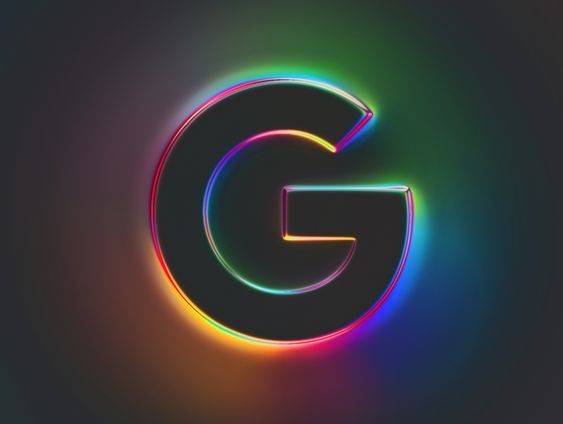
Google, a name synonymous with search, has grown to become one of the largest and most influential companies in the world. While it started as a search engine, it has since expanded into various sectors, including digital advertising, cloud computing, hardware, and even self-driving cars. Among these, digital advertising stands out as a key driver of Google’s massive revenue. As of 2023, Google holds a substantial share of the digital advertising market. This article delves into how Google’s dominance in advertising affects market fairness and explores whether its strong position poses a threat to healthy competition and consumer choice.
1. Understanding Google’s Advertising Ecosystem
Google’s advertising ecosystem is vast and complex, encompassing several interconnected platforms and services. The company’s advertising business can be broadly divided into two main areas: search advertising and display advertising.
- Search Advertising: This involves ads that appear on Google’s search engine results pages (SERPs). When users search for specific keywords, Google displays ads at the top and bottom of the results page. These ads are highly targeted, based on the user’s search intent, making them incredibly valuable to advertisers looking to reach potential customers at the moment of interest.
- Display Advertising: This includes ads that appear on websites within Google’s Display Network (GDN) or on YouTube, which Google owns. These ads can be in the form of text, images, or videos and are targeted using Google’s vast troves of user data to reach specific demographics, interests, or behaviors.
Google also owns critical tools that help advertisers and publishers, such as Google Ads, Google Marketing Platform, and AdSense. These tools give Google a presence across almost every stage of the digital advertising supply chain, from ad creation to placement to measurement.
2. The Scale of Google’s Dominance
Google’s dominance in the digital advertising market is significant. As of 2023, it holds around 28.8% of the global digital advertising market, making it the largest player in this space. This dominance is even more pronounced in search advertising, where Google controls over 85% of the market. The company’s massive user base and vast amounts of data allow it to offer advertisers highly effective targeting options.
This level of dominance gives Google immense control over the flow of advertising dollars. Advertisers often feel compelled to use Google’s platforms because of the sheer number of people they can reach. As a result, Google’s advertising revenue reached approximately $224 billion in 2022, accounting for the majority of its total income.
3. The Impact on Competition
Google’s strong position in the digital advertising market has raised concerns about its impact on competition. Critics argue that Google’s dominance makes it difficult for smaller competitors to thrive. Here are some ways this dominance affects competition:
- Barriers to Entry: Google’s integrated ecosystem creates high barriers to entry for new competitors. Because Google owns both the demand side (advertisers) and the supply side (publishers) of the market, it can leverage its size and data to offer better rates and targeting options than smaller competitors. This makes it challenging for new entrants to gain a foothold in the market.
- Data Advantage: Google’s massive trove of user data gives it a significant advantage over competitors. With billions of daily searches and vast amounts of data collected from its various products and services (such as YouTube, Android, and Google Maps), Google can offer highly targeted advertising that other companies find hard to match. This data advantage becomes a self-reinforcing loop: more users generate more data, which improves targeting, attracting more advertisers, and so on.
- Market Power Over Publishers: Google’s dominance also extends to the publishers who rely on advertising revenue to fund their content. Publishers often feel compelled to use Google’s ad services because of the large volume of advertisers on the platform. This can give Google substantial power over the terms and conditions, including the revenue share that publishers receive. Some publishers have argued that Google takes an unfairly large cut of the advertising revenue, limiting their ability to sustain quality content.
4. Allegations of Anti-Competitive Behavior
Google’s dominance has led to numerous legal challenges and investigations around the world. Regulators and competitors have accused the company of engaging in anti-competitive behavior to maintain its dominant position. Here are a few key allegations:
- Self-Preferencing: One of the main criticisms is that Google gives preference to its own products and services in search results. For example, when a user searches for a product, Google often displays its own shopping ads at the top of the results page. Competitors argue that this practice harms other businesses by driving traffic away from them and towards Google’s platforms.
- Exclusive Contracts: Google has been accused of using exclusive contracts to limit competition. For instance, it has made deals with smartphone manufacturers to pre-install Google Search and make it the default search engine. These agreements make it harder for other search engines to compete.
- Bundling and Tying: Google has been accused of tying its services together in ways that disadvantage competitors. For example, businesses that use Google’s ad tools may feel pressured to use other Google services, such as Google Analytics, to ensure compatibility and data integration. This bundling strategy can make it difficult for smaller, specialized companies to compete.
5. Regulatory Actions and Lawsuits
Regulators around the world have taken notice of Google’s market dominance and alleged anti-competitive practices. Several investigations and lawsuits have been launched against the company:
- The European Union (EU): The EU has been particularly active in pursuing Google. In 2017, it fined Google €2.4 billion ($2.8 billion) for favoring its own shopping service in search results. In 2018, it imposed a record €4.3 billion ($5 billion) fine for using its Android operating system to cement its search engine dominance. Another fine of €1.5 billion ($1.7 billion) was levied in 2019 for anti-competitive practices in online advertising.
- United States: In the US, Google faces multiple lawsuits from the Department of Justice (DOJ) and several state attorneys general. These lawsuits accuse Google of maintaining monopolistic power through exclusionary agreements and practices. They aim to challenge Google’s dominance in search and digital advertising and seek remedies that could include breaking up parts of Google’s business.
- Other Countries: Similar actions are being taken in other parts of the world, including India, Australia, and the United Kingdom. These cases revolve around issues like data privacy, market dominance, and anti-competitive practices.
6. How Does This Affect Consumers?
While the discussion around Google’s advertising dominance often focuses on competition, it also has direct implications for consumers:
- Higher Prices: When there is less competition, advertisers may face higher costs to reach their target audiences. These costs can be passed on to consumers in the form of higher prices for goods and services.
- Limited Choice: If Google continues to dominate the digital advertising space, consumers may have fewer choices regarding the content and services they access. Smaller companies and startups might find it hard to compete, reducing innovation and diversity in the market.
- Privacy Concerns: Google’s advertising business relies heavily on user data. The more Google knows about its users, the better it can target ads. However, this raises significant privacy concerns. Consumers may be unaware of how much of their personal information is being collected, stored, and used for advertising purposes.
7. Defending Google’s Position
Despite the criticisms, Google defends its position by arguing that its services benefit consumers and businesses alike. The company points out several arguments in its favor:
- Free Services for Consumers: Google’s vast ecosystem of products, from Gmail to Google Maps, is largely free for consumers. The revenue generated from advertising helps fund these services, allowing users to access high-quality tools at no cost.
- Innovation and Efficiency: Google argues that its advertising tools benefit both advertisers and publishers by improving efficiency and effectiveness. Through advanced machine learning and data analytics, Google claims it helps businesses reach the right audience at the right time, leading to better outcomes for both parties.
- Healthy Competition Exists: Google also maintains that it faces significant competition from other tech giants like Facebook (now Meta), Amazon, and Apple, as well as from a range of smaller companies. It argues that the digital advertising market is dynamic and fast-changing, with multiple players competing for market share.
8. The Future of Digital Advertising
The future of digital advertising, particularly in relation to Google’s role, will likely be shaped by ongoing regulatory actions, technological changes, and shifting consumer attitudes.
- Regulatory Impact: If regulators succeed in their efforts to curtail Google’s dominance, we could see a more level playing field in the digital advertising market. This might involve breaking up parts of Google’s business or imposing strict regulations that limit its ability to leverage its data and market power.
- Technological Disruption: The digital advertising landscape is constantly evolving. New technologies, such as artificial intelligence (AI), blockchain, and privacy-focused advertising models, could disrupt the market. These innovations might provide new opportunities for competitors to challenge Google’s dominance.
- Consumer Awareness and Choice: As consumers become more aware of how their data is used, there may be increased demand for greater privacy controls and transparency. This could lead to the growth of alternative platforms that prioritize user privacy, thereby challenging Google’s data-driven advertising model.
9. Conclusion
Google’s dominance in the digital advertising market is a complex and contentious issue. On one hand, Google has created a highly effective advertising ecosystem that benefits businesses and consumers through free services and innovative tools. On the other hand, its dominance raises serious concerns about market fairness, competition, and consumer privacy.
While regulators and competitors continue to challenge Google’s market power, the outcome of these efforts remains uncertain. What is clear, however, is that the debate over Google’s role in digital advertising is far from over. As the digital landscape continues to evolve, it will be crucial to balance innovation and competition to ensure a fair and open market that benefits everyone, from advertisers and publishers to everyday consumers.
Ultimately, whether Google’s advertising dominance is a threat to market fairness will depend on how it uses its power and how regulators, competitors, and consumers respond to it in the coming years.







